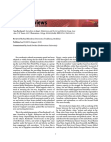"At long last: a set of serious, sustained engagements with the complex relationships between anarchism and the politics and practice of sexuality. Jamie Heckert and Richard Cleminson have gathered together a collection of passionate, provocative papers that incite the reader to recognize the relevance of anarchist ideas to queer and feminist sexual politics.
-- Sasha Roseneil, author of Common Women, Uncommon Practices: the queer feminisms of Greenham, and Professor of Sociology and Social Theory at Birkbeck, University of London
Not so much a book as a nexus, into which flow some bubbling torrents: utopias, poetry and footnotes, post-theory, rationality, sexuality, Palestine, love, sado-masochism, Kropotkin and Nietzsche, lonely women in all-male meetings, riot grrrls, Queer parades, heteronormativity …and fishbowls. – Something to delight everyone, something to annoy everyone, something to make you think.
-- Sharif Gemie, Professor in Modern and Contemporary History, University of Glamorgan
________________________
Anarchism & Sexuality aims to bring the rich and diverse traditions of anarchist thought and practice into contact with contemporary questions about the politics and lived experience of sexuality. Both in style and in content, it is conceived as a book that aims to question, subvert and overflow authoritarian divisions between the personal and political; between sexual desires categorised as heterosexual or homosexual; between seemingly mutually exclusive activism and scholarship; between forms of expression such as poetry and prose; and between disciplinary categories of knowledge. Anarchism & Sexuality seeks to achieve this by suggesting connections between ethics, relationships and power, three themes that run throughout. The key objectives of the book are: to bring fresh anarchist perspectives to debates around sexuality; to make a queer and feminist intervention within the most recent wave of anarchist scholarship; and to make a queerly anarchist contribution to social justice literature, policy and practice. By mingling prose and poetry, theory and autobiography, it constitutes a gathering place to explore the interplay between sexual and social transformation.This book will be of use to those interested in anarchist movements, cultural studies, critical legal theory, gender studies, and queer and sexuality studies.
Contents:
Preface: Sexual Anarchy, Anarchophobia, and Dangerous Desires, Judy Greenway
1. Ethics, Relationships & Power: An Introduction, Jamie Heckert & Richard Cleminson
2. Alexander Berkman: Sexual Dissidence in the First Wave Anarchist Movement and Its Subsequent Narratives, Jenny Alexander
3. Nobody Knows What an Insurgent Body Can Do: Questions for Affective Resistance, Stevphen Shukaitis.
Poetic Interlude I, Helen Moore
4. Postanarchism and the Contrasexual Practices of the Cyborg in Dildotopia or ‘The War on the Phallus’, Lena Eckert
5. On Anarchism: An Interview with Judith Butler, Jamie Heckert.
Poetic Interlude II, Tom Leonard
6. Love and Revolution in Le Guin’s Four Ways to Forgiveness, Laurence Davis
7. Structures of Desire: Postanarchist Kink in the Speculative Fiction of Octavia Butler and Samuel Delany, Lewis Call
8. Fantasies of an Anarchist Sex Educator, Jamie Heckert.
Poetic Interlude III,J. Fergus Evans & Helen Moore
9. Sexuality Issues in the Czech Anarchist Movement, Marta Kolářová
10. Amateurism and Anarchism in the Creation of Autonomous Queer Spaces, Gavin Brown.
Afterword: On the Phenomenology of Fishbowls, Kristina Nell Weaver"
More Info: 2011, Routledge; Co-edited with Richard Cleminson
















